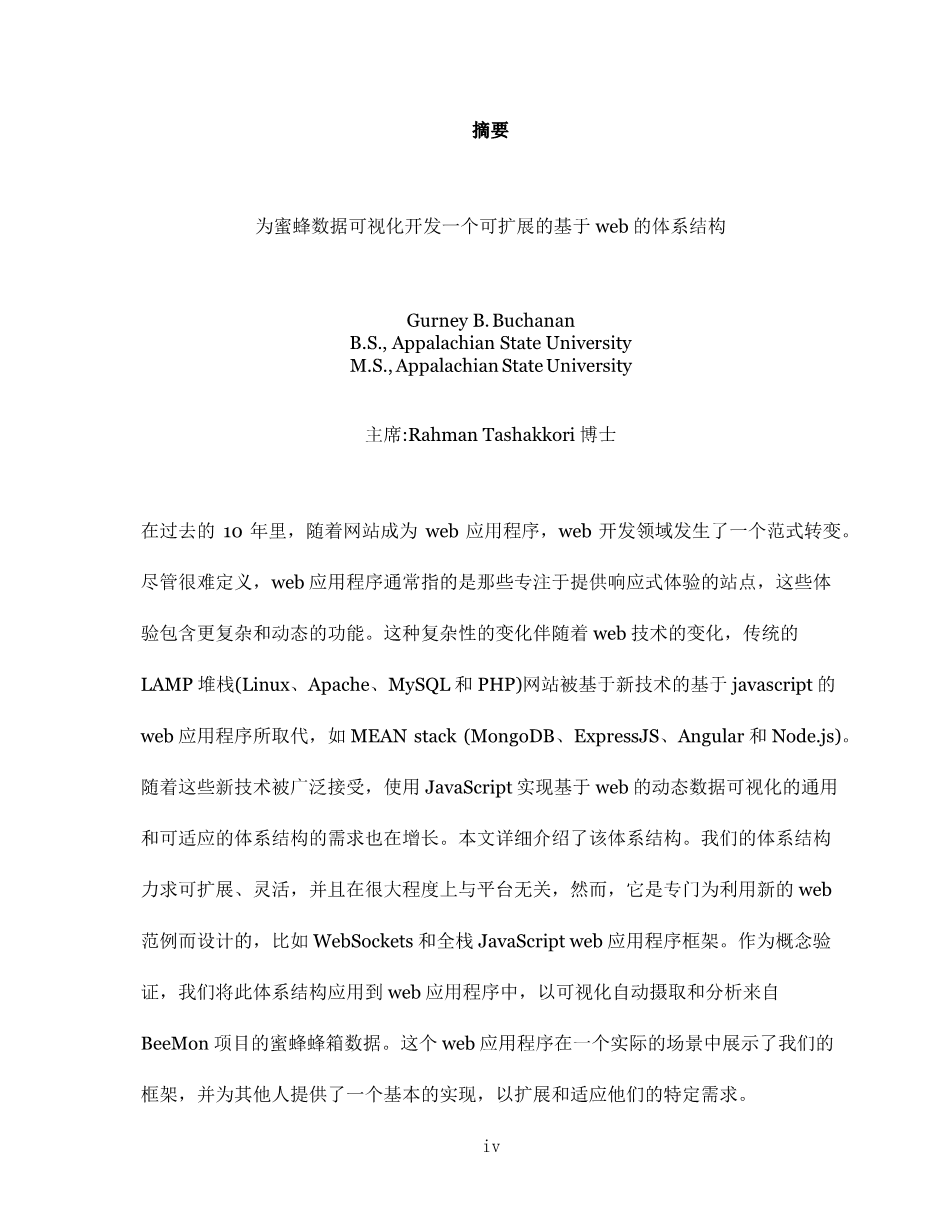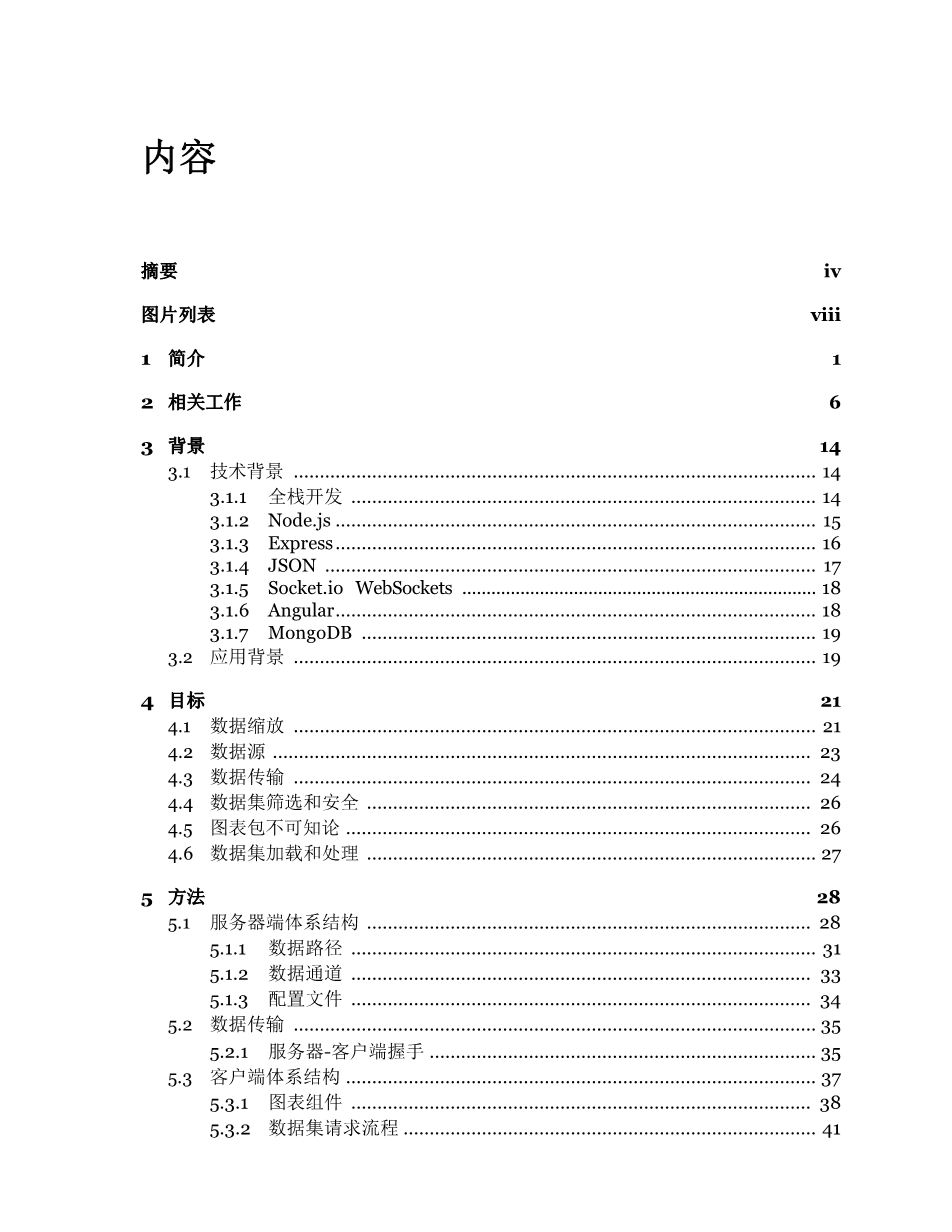Abstract
Developing an Extendable Web-Based Architecture for Honey Bee Data Visualization
Gurney B. Buchanan
B.S., Appalachian State University M.S., Appalachian State University
Chairperson: Dr. Rahman Tashakkori
Over the past 10 years, a paradigm shift has occurred in the field of web development as websites became web applications. Although hard to define, web applications usually refer to sites with a focus on providing responsive experiences that incorporate more complex and dynamic functionality. This shift in complexity is accompanied by a shift in web technologies, as traditional LAMP stack (Linux, Apache, MySQL, and PHP) websites are replaced by JavaScript-based web applications built upon new technologies such as the MEAN stack (MongoDB, ExpressJS, Angular, and Node.js). As these new technologies become widely accepted, the need for a general and adaptable architecture for web-based dynamic data visualization using JavaScript has grown. This thesis details such an architecture. Our architecture seeks to be extendable, flexible, and largely platform agnostic, however, it is specifically designed to leverage new web paradigms such as WebSockets and full stack JavaScript web application frameworks. As a proof of concept, we have applied this architecture in a web application for the visualization of automatically ingested and analyzed honey bee hive data from the BeeMon project. This web application presents our framework in a practical scenario and provides a basic iv
implementation for others to extend and adapt to their specific needs.
Contents
Abstract iv
Acknowledgements v
- Introduction 1
- Related Work 6
-
Background 14
-
Technical Background 14
- Full Stack Development 14
- Node.js 15
- Express 16
- JSON 17
- Socket.io WebSockets 18
- Angular 18
- MongoDB 19
- Application Background 19
-
Technical Background 14
- Objectives 21
- Methodology 28
vii
Bibliography 55
Vita 57
viii
List of Figures
3.1 JSON excerpt from Beestreamrsquo;s package.json file. 17
ix
Chapter 1
Introduction
The Internetrsquo;s foundational technologies are perpetually evolving. As the underlying languages and technologies change, our methods to solve common problems must also adapt to leverage new capabilities, overcome newfound weaknesses, and offer experiences possible only with advancing technology. Over the past decade we have observed a series of dramatic innovations in web technology, and as such we have observed a paradigm shift as mostly static websites transformed into dynamic web applications. Web applications, although hard to define, typically focus on providing responsive experiences that incorporate more complex and dynamic functionality. Web applications represent the next logical progression for both websites and desktop applications. Websites see a growing demand for dynamic and increasingly complex functi
剩余内容已隐藏,支付完成后下载完整资料


英语译文共 19 页,剩余内容已隐藏,支付完成后下载完整资料
资料编号:[410006],资料为PDF文档或Word文档,PDF文档可免费转换为Word
以上是毕业论文外文翻译,课题毕业论文、任务书、文献综述、开题报告、程序设计、图纸设计等资料可联系客服协助查找。


